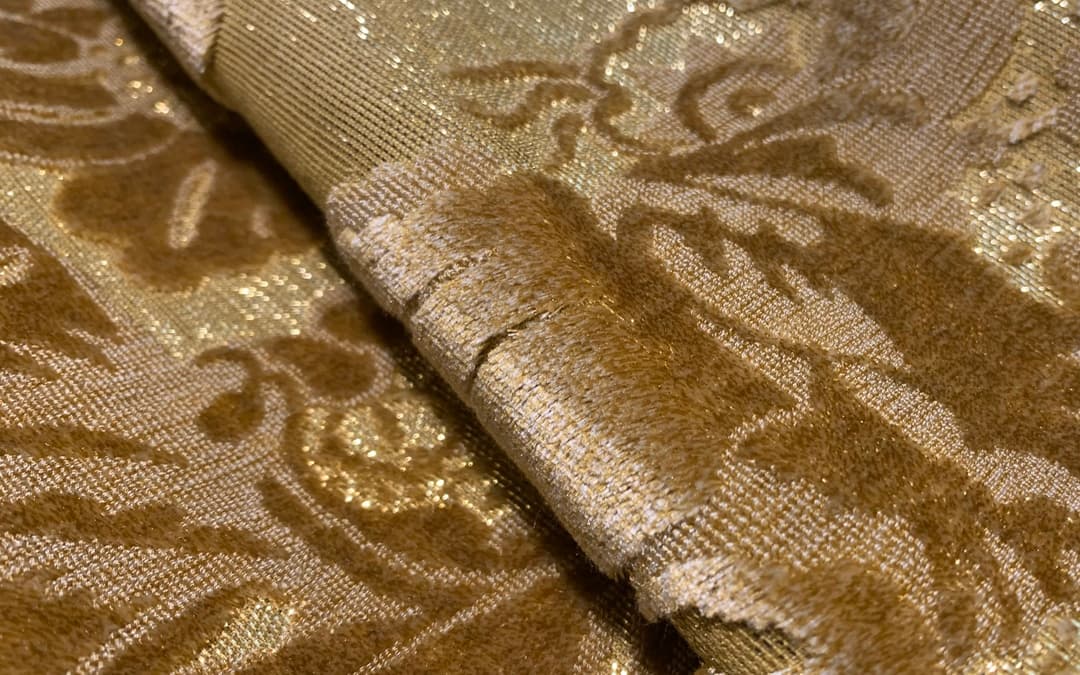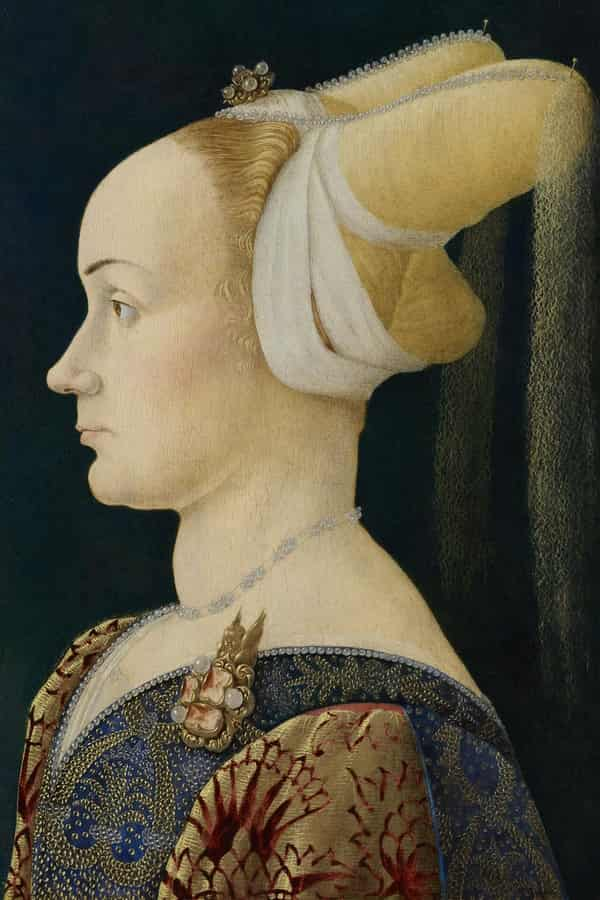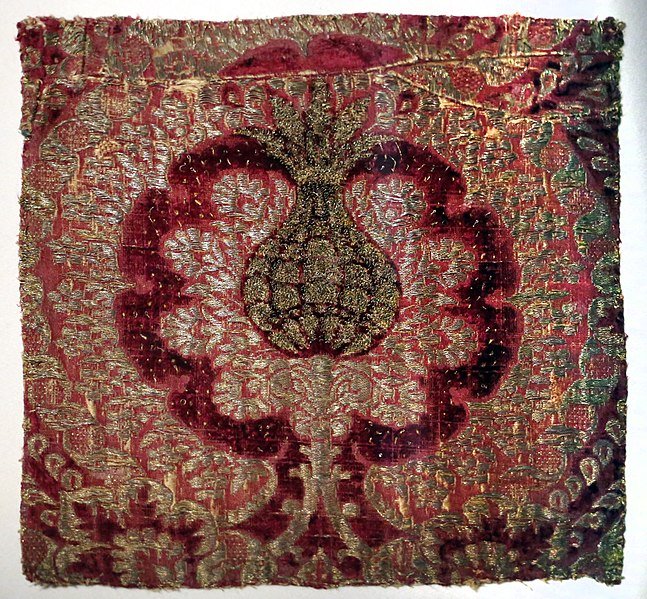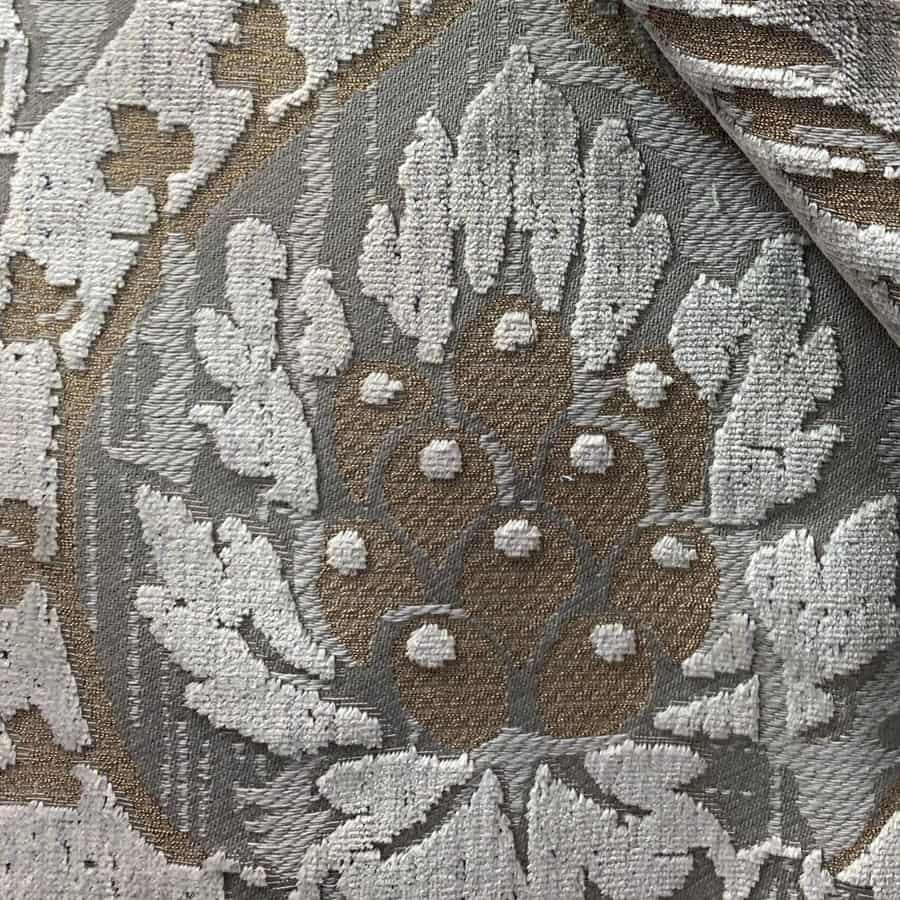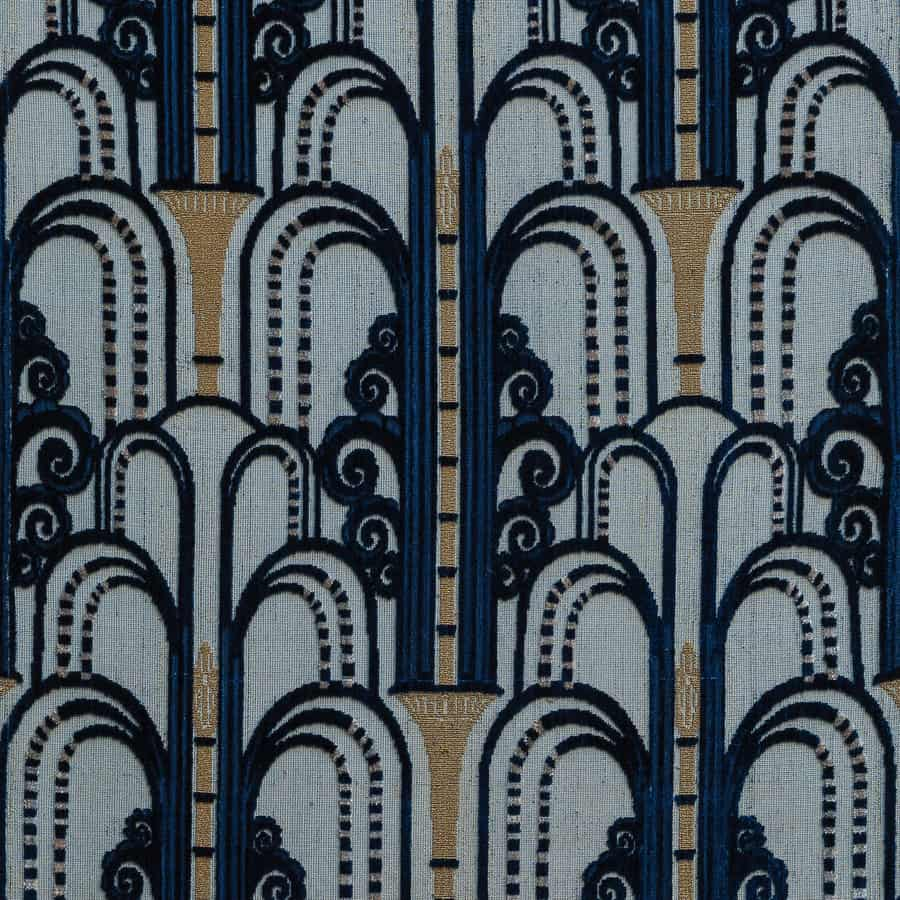Precious fabrics, richly decorated, have always fascinated with their beauty and sophistication. Among the luxurious fabric workings, there is one considered a true virtuosity, in which Venetian silk artisans excelled: allucciolatura. We tell you what it is and its history.
The allucciolatura technique
Allucciolatura is an ancient technique for embellishing textiles that is believed to have originated in the East and then spread to Europe, where it reached its peak during the Renaissance.
In Venice, the continuous trade with the East, which brought silks, precious stones, fine metals and refined artifacts to Venice, and the wealth of the more affluent classes that created a high demand for luxury goods, gave impetus to the birth and development of a class of skilled silk craftsmen, who excelled in this as well as other techniques for creating exclusive textiles.
Their skill was internationally recognized, and by the 15th century they were being called upon by royal courts throughout Europe to bring their art to those kingdoms to meet the very high demand for fine fabrics.
Portrait of a Noblewoman, 1465 – Allucciolato Velvet Dress
One of the types of decoration in Venetian silk velvets was the brocading of some compositional element, such as the central pomegranate in so-called “cammino” velvets. This workmanship consisted of wrapping thin strips of gold or silver thread around the silk core.
Another luxurious velvet manufacturing technique, originating in Venice, became a true status-symbol of the time. This was the making of alto-basso (high-low) or controtagliato velvet, which, thanks to two pile heights, creates three-dimensional patterns on the fabric. Another exclusive workmanship that had great success was that of soprarizzo velvet, in which, to the different pile heights, “curly” pile is added, which gives the decoration splendid effects of depth and unique chromatics, due to the different way light reflects on the velvet surface.
To these already highly valued velvets, even more sophisticated processing was added to further embellish them. This was the “allucciolatura”. Although it may seem similar to brocading at first glance, this technique is much more complex.
Allucciolatura involves passing a gold or silver thread over the surface of the fabric, bound by a binding warp, lifted and twisted at regular intervals using a crochet hook or similar iron. These windings may take the appearance of simple loops or small spirals, wrapped around themselves two or three times. This entirely manual technique gave rise to sumptuous fabrics operated with a textured appearance and shimmering with gold.
Allucciolato Velvet, 1450 ca. – Museo del Costume, Milan
From the past to the present: the art of creating fine velvets
At that time, the most exclusive velvets, controtagliato, soprarizzo, allucciolato, and those woven with the use of gold and silver threads, were highly valued but so expensive that only the wealthiest and most powerful families could afford them. In fact, they were intended for the court, high clergy and nobility to adorn their residences and to make sumptuous robes and liturgical vestments.
Even today, velvets are still produced with the insertion of metallic yarns that give the fabric a sumptuous appearance, bringing out the decorative motif, as in Pigna heddle velvet and Walls soprarizzo velvet.
Allucciolatura, on the other hand, is today an art that has almost disappeared, but we can still admire clothing and especially sacred vestments made in the past with this technique, which have been preserved over time and are part of museums or private collections.
The great skill and precision required for allucciolated fabrics are also needed to produce the controtagliato and soprarizzo velvets, which our weavers still make by hand in Venice. They do this with the same techniques used in the Renaissance, and with ancient wooden Jacquard looms, keeping alive an art that has now disappeared around the world and that the Tessitura Bevilacqua passes down from generation to generation.
Usually, these luxurious fabrics are produced at the request of customers who choose special designs or with the addition of metal yarns, as in the Giardino Fioroni soprarizzo velvet in gold color, embellished with the weft in metal yarn, created for a famous Italian Maison.
Today as then, the exclusivity and charm of these unique fabrics continue to fascinate lovers of luxury and precious objects such as handmade Venetian velvets.
Cover photo and video: Giardino Fioroni Soprarizzo Velvet in Gold

